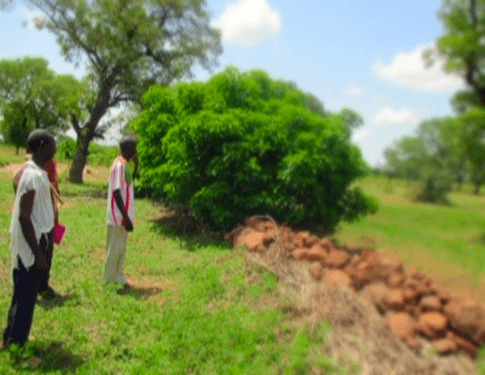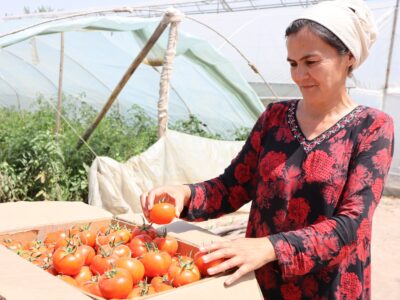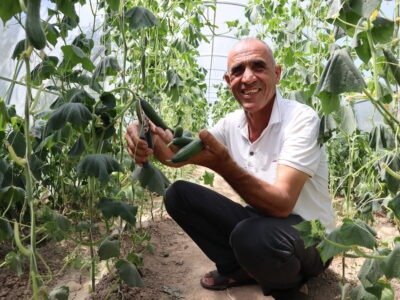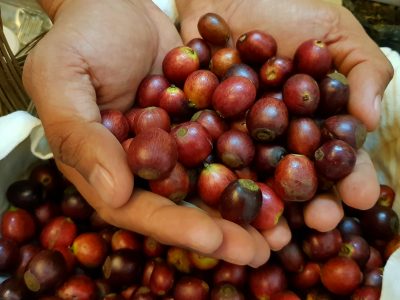
Feed the Future is improving incomes and food security through sustainable and climate-smart agriculture, even in often harsh and already degraded environments.
NGoukan village, located about 30 km southeast of Koutiala in southern Mali, has 440 inhabitants who work on 44 farms. For years, farmers from this village, who grow cotton, maize, millet, sorghum, rice, and groundnuts, have dealt with soil erosion caused by runoff. Runoff carries away topsoil, fertilizers, and manure, and also cuts gullies into fertile lands.
In collaboration with CMDT and members of the NGoukan cooperative, the USAID CVC project developed local solutions to stop the erosion. In 2014, the project trained 11 village producers on erosion control techniques, which includes live fences of Jatropha curcas, grass strips of Andropogon gayanus, stone bunds, trash lines, check dams, and contour ridges.
After implementing the lessons learned, farmers did not have to wait long to see the results of their hard work as the different interventions slowed down the runoff, improved infiltration, and allowed for restoration of vegetation on bare soils.
Soumaila Dembélé stated that, “for decades, the runoff crossed [her] field. [She] could not do anything to solve the problem, and finally, the topsoil had disappeared and [her] field had become a hard impermeable land. Impossible to farm on, even unable to grow grasses. But since [she] set up the erosion control measures, after just two years [she is] able to cultivate the field again.”
Diakaridia Dembélé, the secretary of the cooperative, explained that, “today, all the farmers in NGoukan have adopted these techniques in their respective fields. I thank CVC for having brought these land restoration methods to our village. Thanks to them, the soil erosion of my field has substantially diminished.”
These successes have encouraged and empowered farmers to expand and adapt erosion control techniques to their lands and context.
Cooperative member Alassane Dembélé noted that, “these days, people are more attracted by grass strips because the stones are increasingly rare. Once installed, grass strips of Andropogon can be replicated.”
The effects of these measures are so apparent that farmers in surrounding villages, which are facing similar erosion challenges, are eager to learn. In neighboring Bania village, farmers have already requested CVC support in learning these techniques.
By scaling up these results in arid land restoration for afforestation and agro-sylvo-pastoral production, CVC will significantly contribute to improving incomes and strengthening food security while playing an important role in preparing local populations for increased resilience to climate change.






